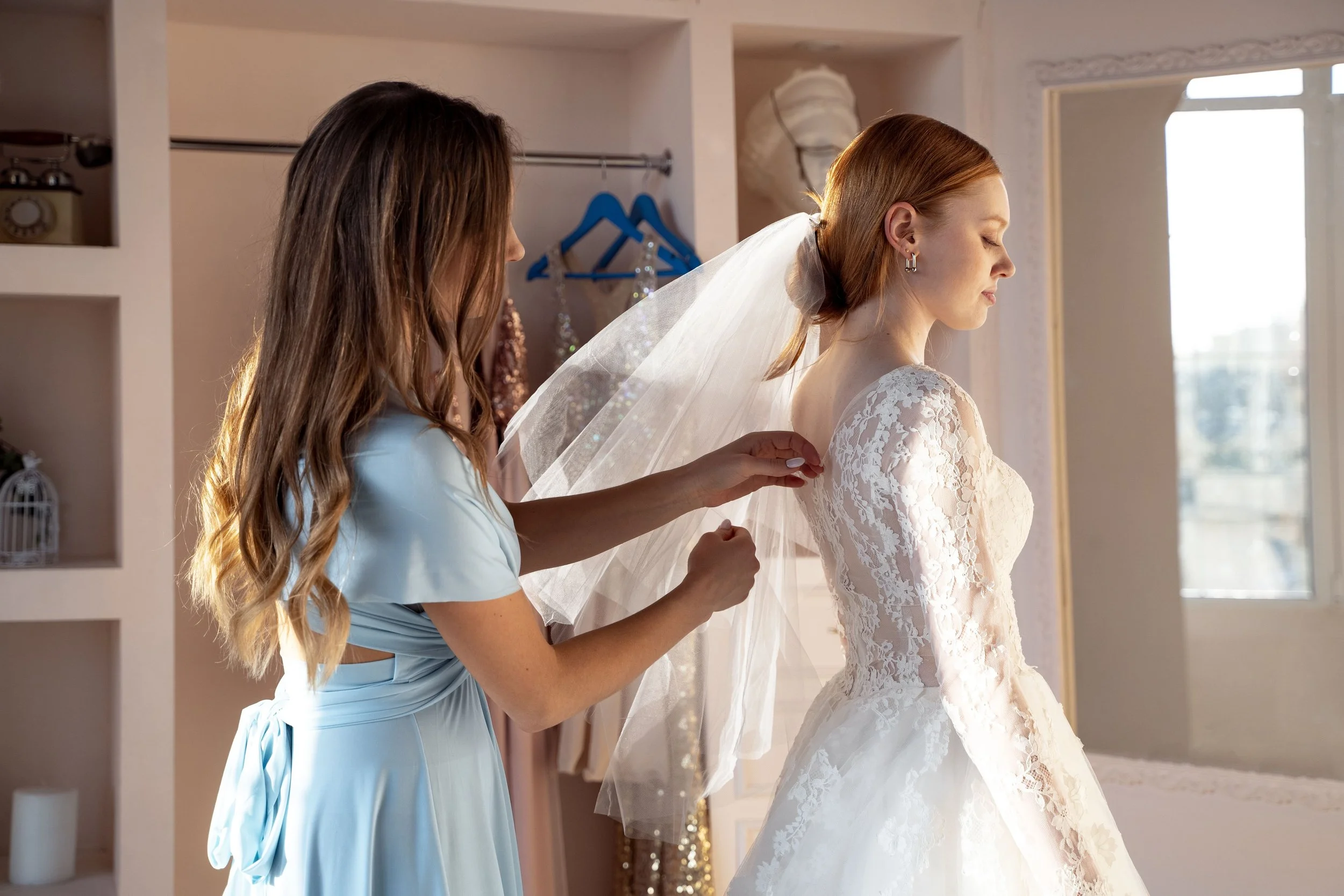How to Figure Out Your Custom Wedding Dress Size
Figuring out your wedding dress size involves a few steps to ensure an accurate fit. Here's a detailed guide to help you determine your custom wedding dress size:
Measure your bust: Wrap a measuring tape around the fullest part of your bust, ensuring it is straight across your back and not too tight or too loose.
Measure your waist: Find the smallest part of your waist and measure it with the tape. This is typically above the belly button and below the ribcage.
Measure your hips: Measure around the fullest part of your hips, which is usually 7-9 inches below your waist.
Determine your dress size: Compare your measurements with the size chart provided by the designer or bridal store. Each designer may have a size chart, so it's essential to refer to their specific measurements. Match your bust, waist, and hip measurements to the closest size on the chart.
Consider your largest measurement: If your measurements fall into different size categories (e.g., your bust measurement corresponds to one size, while your waist measurement aligns with a different size), it's generally recommended to choose the size that corresponds to your largest measurement. Alterations can later be made to adjust the dress to your other measurements.
Be aware of your body shape: It's important to consider your body shape when determining your wedding dress size. Different dress styles suit different body types. For example, if you have an hourglass figure, you may want to emphasize your waistline, while an A-line dress can flatter a variety of body shapes.
Consult with a professional: If you're uncertain about measuring yourself or choosing the right size, it's highly recommended to consult with a professional at a bridal salon. They have expertise in fitting wedding dresses and can guide you through the process to ensure an accurate size selection.
Remember that wedding dress sizes can vary across different designers, so it's crucial to refer to their specific size charts. Additionally, alterations are often needed to achieve the perfect fit, so it's a good idea to budget for alterations when planning for your dress.
The Difference between Bridal and Ready-to-Wear Sizes
The difference between bridal sizes and ready-to-wear sizes can be significant. Bridal sizes generally run smaller than regular ready-to-wear sizes. There are a few reasons for this variation:
Vanity sizing: Ready-to-wear clothing brands often use vanity sizing, where they label larger sizes with smaller numbers to make customers feel better about their size. This means that a person who wears a size 6 in ready-to-wear clothing might fit into a size 10 or 12 in bridal wear. Bridal sizing tends to be more standardized and reflects more accurate measurements.
Unique sizing systems: Bridal designers often have their sizing systems and charts, which can differ from brand to brand. They consider specific measurements and proportions that are specific to wedding dresses. It's crucial to refer to the size chart provided by the bridal designer or salon to determine the appropriate size for a wedding dress.
Structure and fabric: Wedding dresses are typically made with more design, corseting, boning, and built-in support compared to regular clothing. The construction of a wedding dress can affect the way it fits and may require different sizing considerations.
Alterations: Wedding dresses are commonly altered to achieve the perfect fit. Professional seamstresses can make adjustments to the dress based on the bride's specific measurements. This allows for more flexibility in choosing a size that matches the bride's largest measurement and making alterations to fit other areas of the body.
Given these differences, it's important not to get too fixated on the number associated with the size. Focus on finding the custom wedding dresses that makes you feel comfortable and beautiful, and work with a bridal consultant or seamstress who can guide you through the sizing process and make any necessary alterations to ensure a perfect fit.

